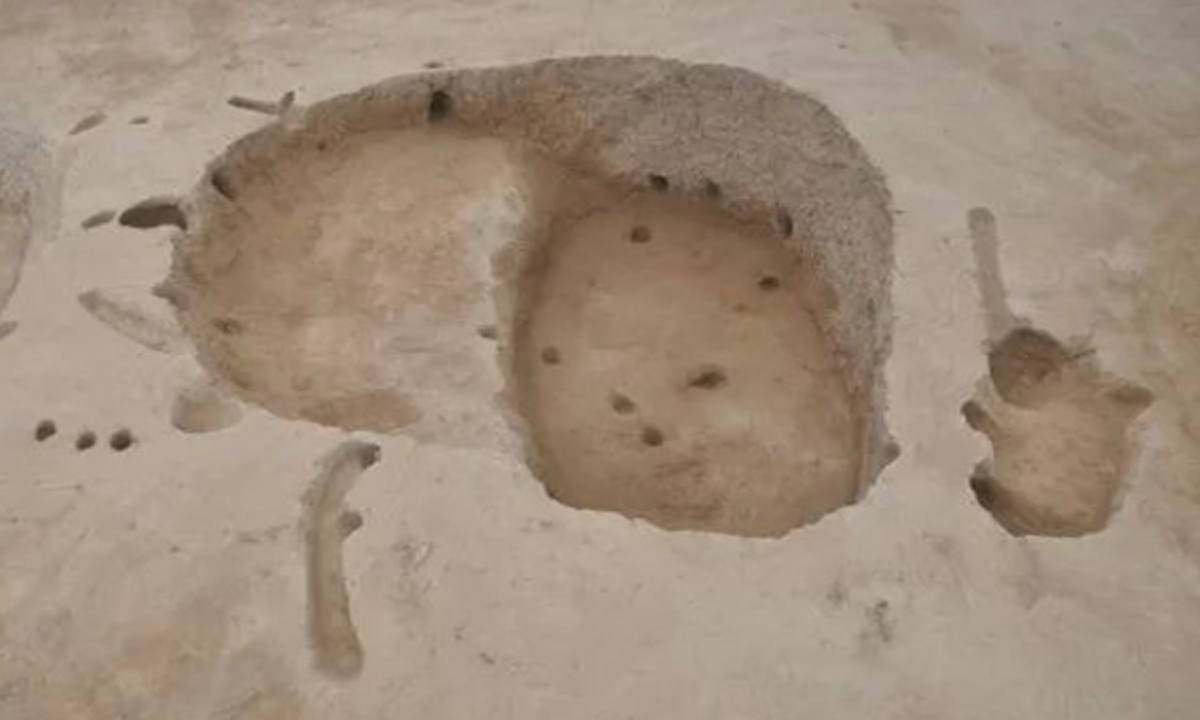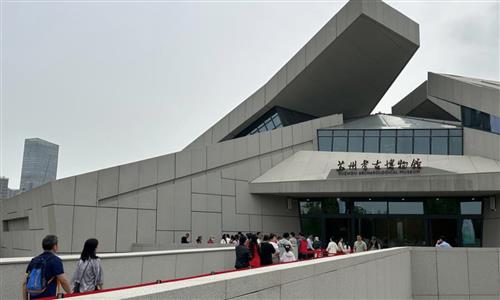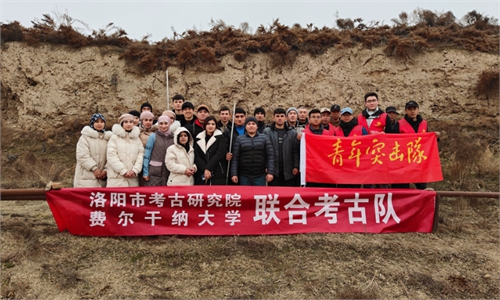ARTS / CULTURE & LEISURE
Shaanxi archaeological site sees breakthroughs in understanding Yangshao housing

Photo: Courtesy of the local archaeological institution
At an archaeological excavation covering 3,850 square meters at the Xiejiahe site in Xianyang, Northwest China's Shaanxi Province, researchers have uncovered Yangshao period (around 5000BC-3000BC) remains that include a group of uniquely circular-structured house foundations. The site was recently selected as one of Shaanxi's six major archaeological discoveries of 2024, according to an announcement released by the local archaeological institution on its official WeChat account on Wednesday.
The remains, identified as belonging to the middle to late Yangshao period, have revealed 19 house foundations, 15 ash pits, and two trenches. Most of the house foundations were circular and semi-subterranean, showing a variety of configurations that challenge long-held assumptions about Yangshao architecture.
Traditionally, Yangshao houses were believed to be either circular or square, or sometimes combining square units. However, the Xiejiahe site reveals innovative forms, such as circular structures connected to other circular or even semicircular spaces, thus expanding the typological framework of Yangshao housing. This discovery provides valuable evidence of how early Yangshao communities meticulously planned their living spaces, which accommodated various functions such as cooking, storage, and resting within carefully organized zones.
Zeng Li, a postdoctoral researcher with the Silk Road Institute at Northwest University, told the Global Times that other round or square houses from the Yangshao period mainly had simple divisions for cooking, storage, and resting. In contrast, the combined house structures at Xiejiahe were more clearly divided and gave greater importance to storage.
"This was likely due to the area's climate, with cold and dry winters and heavy summer rains. The challenging climate required better grain storage and careful planning of indoor spaces to handle extreme temperatures," Zeng said.
Excavators noted that the combined house structures often featured pillar holes along the walls, with some showing horizontal pillar holes at the base, indicating that raised wooden platforms were likely used to store goods or to keep living spaces dry. Even in small, flat-floored structures, simple functional divisions could be seen, illustrating a consistent emphasis on practicality and order.
The combined structures provide even clearer insights into daily life, often revealing higher, shallower spaces used for cooking - evidenced by layers of burnt soil - and deeper areas intended for storage or resting.
The well-defined pillar arrangements suggest wooden frameworks that elevated storage spaces above ground. In some cases, specially constructed pit-like storage areas were found alongside clearly demarcated cooking or resting spaces, underscoring a sophisticated approach to residential design.
The Xiejiahe site's discoveries highlight the ingenuity of the Yangshao people in adapting living spaces to meet daily needs while challenging researchers to refine the terminology and methodology used in Chinese archaeology. The findings not only expand our understanding of Yangshao housing but also encourage a reexamination of long-standing excavation conventions. This milestone in archaeological research stands as a testament to the enduring complexity and adaptability of ancient communities along the Yellow River basin.



